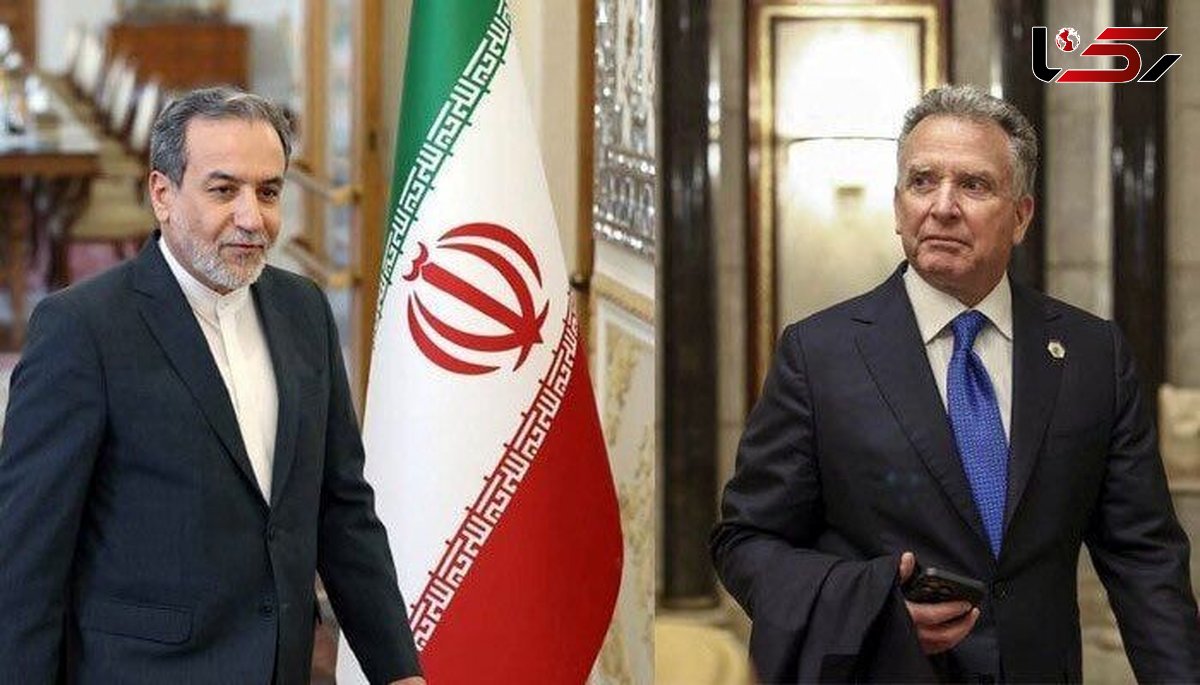Direct Contact Between Araqchi and Witkoff: Tehran Presents Roadmap for Final Agreement with U.S.
Rokna Political Desk: In recent days, direct communications between Iranian Deputy Foreign Minister Abbas Araqchi and U.S. official Steve Witkoff have led to the presentation of a proposal from Iran to immediately begin negotiations with the United States on a temporary nuclear agreement, followed by talks toward a “final agreement.”

According to Rokna, citing Euronews, with the September 27 reactivation of UN sanctions against Iran imminent, these contacts reflect Tehran’s political will to avert an imminent nuclear confrontation at the United Nations Security Council.
Araqchi has reportedly shared a roadmap for a potential agreement; however, the United States has yet to respond. The Iranian proposal was also communicated to European foreign ministers from the E3 (the United Kingdom, France, and Germany) and the European Union.
Background of Recent Engagements
Araqchi and Witkoff were scheduled to meet for the sixth round of nuclear talks in Oman on June 15, but the meeting was disrupted by a surprise Israeli attack on Iran on June 13. Following this, the U.S. conducted airstrikes on three key Iranian nuclear sites on June 22. A fragile ceasefire was later declared by then-President Donald Trump.
The Roadmap for a Final Agreement
The recent exchanges between Araqchi and Witkoff resulted in Iran presenting a proposal for immediate negotiations on a temporary nuclear agreement, followed by discussions aimed at a final agreement. According to political sources cited by Amwaj Media, Araqchi submitted the proposal on September 16, one day prior to a phone call with his counterparts from the E3 and the EU. The proposal outlines two simultaneous steps to be implemented before the September 28 reactivation of UN Security Council sanctions.
Step One: Iran seeks to resume negotiations to achieve a temporary agreement, which would include the recovery and dilution of its high-enriched uranium stockpile. In exchange, Iran requests that the E3 refrain from pursuing the snapback mechanism and consider the removal of sanctions.
Step Two: To provide “sufficient time and space” for discussions on the temporary agreement, Iran proposes extending the applicability of UN Security Council Resolution 2231, which relates to the snapback mechanism, for several months. This would effectively delay any reimposition of sanctions while allowing negotiations to proceed.
Following the temporary agreement, Iran’s roadmap envisions two additional steps:
-
The United States would provide “strong and concrete security guarantees” ensuring no further aggression against Iran.
-
Iran would begin the physical recovery of its 60% enriched uranium stockpile.
The three-step document further details the process: the permanent conclusion of UN Security Council Resolution 2231, dilution of the 60% enriched uranium to 20% for producing fuel plates for medical isotope production in Tehran’s research reactor, and the subsequent lifting of agreed sanctions by the United States, after which negotiations for a final agreement would commence.
A senior Iranian political source, speaking anonymously to Amwaj Media, stated that the Trump administration has not yet responded to Araqchi’s September 16 proposal. Another political source in Tehran expressed skepticism regarding the likelihood of the United States abandoning expectations of Iranian compliance, a stance that could increase the risk of renewed military confrontation.
Send Comments